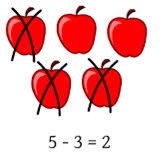A sense of purpose helps in adverse conditions. You have more distance, you have the big picture, and that helps you to relativize things, to realize what is important. ~Marc Le Menestrel
 The Stonecutter’s Tale is an insightful metaphor to illustrate the significance of helping those you lead stay focused on the big picture.
The Stonecutter’s Tale is an insightful metaphor to illustrate the significance of helping those you lead stay focused on the big picture.
One day a traveler, walking along a lane, came across three stonecutters working in a quarry. Each was busy cutting a block of stone. Interested to find out what they were working on, he asked the first stonecutter what he was doing. “I am cutting a stone!” Still no wiser the traveler turned to the second stonecutter and asked him what he was doing. “I am cutting this block of stone to make sure that it’s square, and its dimensions are uniform, so that it will fit exactly in its place in a wall.” A bit closer to finding out what the stonecutters were working on but still unclear, the traveler turned to the third stonecutter. He seemed to be the happiest of the three and when asked what he was doing replied: “I am building a cathedral.”
In Peter Drucker’s version, when asked what they were doing, the first stonecutter replied: “I am making a living.”
The second kept on hammering while he responded: “I am doing the best job of stone cutting in the entire country.”
The third stonecutter, when asked the same question said: “I am building a cathedral.”
Drucker focuses particularly on the second stonecutter, suggesting that perhaps this narrowly-focused, professional approach could be detrimental to the project or organization as a whole. This worker’s pride and attention was limited to the narrow scope of his own work, ignoring any contribution to the organization’s overall success or big picture.
The topic of leadership and the big picture has come up repeatedly for me recently. In supervisor training, focusing on the big picture was a suggested approach when trying to re-engage an employee. In identifying a group of board members to lead a not-for-profit, considering if they can stay focused on the big picture or do they allow themselves to get lost in the weeds. In a manufacturing plant that drives home the value of hard work but fails to connect that hard work to a big picture, something meaningful for the employees to grab onto.
We all get caught-up in details and trivia from time-to-time. The most effective leaders recognize when this happens and they quickly shift the focus back to the big picture – back to building a cathedral!

 business, and our lives. We are in the Era of Behavior and the rules of the game have fundamentally changed. It is no longer what you do that matters most and sets you apart from others, but how you do what you do. Whats are commodities, easily duplicated or reverse-engineered. Sustainable advantage and enduring success for organizations and the people who work for them now lie in the realm of how, the new frontier of conduct.
business, and our lives. We are in the Era of Behavior and the rules of the game have fundamentally changed. It is no longer what you do that matters most and sets you apart from others, but how you do what you do. Whats are commodities, easily duplicated or reverse-engineered. Sustainable advantage and enduring success for organizations and the people who work for them now lie in the realm of how, the new frontier of conduct.
